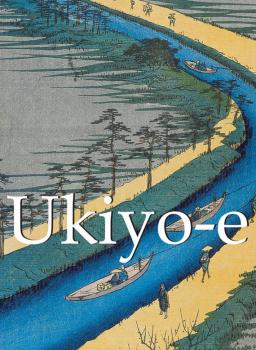Dora Amsden
Список книг автора Dora AmsdenThe Heritage of Hiroshige
"The Heritage of Hiroshige" by Dora Amsden, J. S. Happer. Published by Good Press. Good Press publishes a wide range of titles that encompasses every genre. From well-known classics & literary fiction and non-fiction to forgotten−or yet undiscovered gems−of world literature, we issue the books that need to be read. Each Good Press edition has been meticulously edited and formatted to boost readability for all e-readers and devices. Our goal is to produce eBooks that are user-friendly and accessible to everyone in a high-quality digital format.
Impressions of Ukiyo-E
Ukiyo-e (‘pictures of the floating world’) is a branch of Japanese art which originated during the period of prosperity in Edo (1615–1868). Characteristic of this period, the prints are the collective work of an artist, an engraver, and a printer. Created on account of their low cost thanks to the progression of the technique, they represent daily life, women, actors of kabuki theatre, or even sumo wrestlers. Landscape would also later establish itself as a favourite subject. Moronobu, the founder, Shunsho, Utamaro, Hokusai, and even Hiroshige are the most widely-celebrated artists of the movement. In 1868, Japan opened up to the West. The masterful technique, the delicacy of the works, and their graphic precision immediately seduced the West and influenced greats such as the Impressionists, Van Gogh, and Klimt. This is known as the period of ‘Japonisme’. Through a thematic analysis, Woldemar von Seidlitz and Dora Amsden implicitly underline the immense influence which this movement had on the entire artistic scene of the West. These magnificent prints represent the evolution of the feminine ideal, the place of the Gods, and the importance accorded to landscape, and are also an invaluable witness to a society now long gone.
Ukiyo-e
Ukiyo-e (‘pictures of the floating world’) is a branch of Japanese art which originated during the period of prosperity in Edo (1615-1868). Characteristic of this period, the prints are the collective work of an artist, an engraver, and a printer. Created on account of their low cost thanks to the progression of the technique, they represent daily life, women, actors of kabuki theatre, or even sumo wrestlers. Landscape would also later establish itself as a favourite subject. Moronobu, the founder, Shunsho, Utamaro, Hokusai, and even Hiroshige are the most widely-celebrated artists of the movement. In 1868, Japan opened up to the West. The masterful technique, the delicacy of the works, and their graphic precision immediately seduced the West and influenced greats such as the Impressionists, Van Gogh, and Klimt. This is known as the period of ‘Japonisme’. Through a thematic analysis, Woldemar von Seidlitz and Dora Amsden implicitly underline the immense influence which this movement had on the entire artistic scene of the West. These magnificent prints represent the evolution of the feminine ideal, the place of the Gods, and the importance accorded to landscape, and are also an invaluable witness to a society now long gone.
Ukiyo-e
L’Ukiyo-e (« images du monde flottant ») est un courant artistique japonais qui naquit pendant la période prospère de l’Edo (1615-1868). Caractéristiques de cette période, les estampes sont l’œuvre collective d’un artiste, d’un graveur et d’un imprimeur. Développées en raison de leur faible coût grâce à l’évolution de la technique, elles représentent la vie quotidienne, les femmes, les acteurs du théâtre kabuki ou encore les lutteurs de sumo. Le paysage s’imposera ensuite comme l’un des sujets favoris. Moronobu, le fondateur, Shunsho, Utamaro, Hokusai ou encore Hiroshige sont les artistes les plus réputés de ce mouvement. En 1868, le Japon s’ouvre à l’Occident. La maîtrise de la technique, la finesse des œuvres et la précision graphique séduisent immédiatement l’Occident et influencent les plus grands tels les impressionnistes, Van Gogh ou Klimt. C’est la période dite du « Japonisme ». A travers une analyse thématique, Woldemar von Seidlitz et Dora Amsden soulignent en filigrane l’influence immense qu’eut ce mouvement sur toute la scène artistique occidentale. Ces magnifiques estampes représentant l’évolution de l’idéal féminin, la place des dieux, ou l’importance accordée au paysage, sont aussi le précieux témoignage d’une société aujourd’hui révolue.



